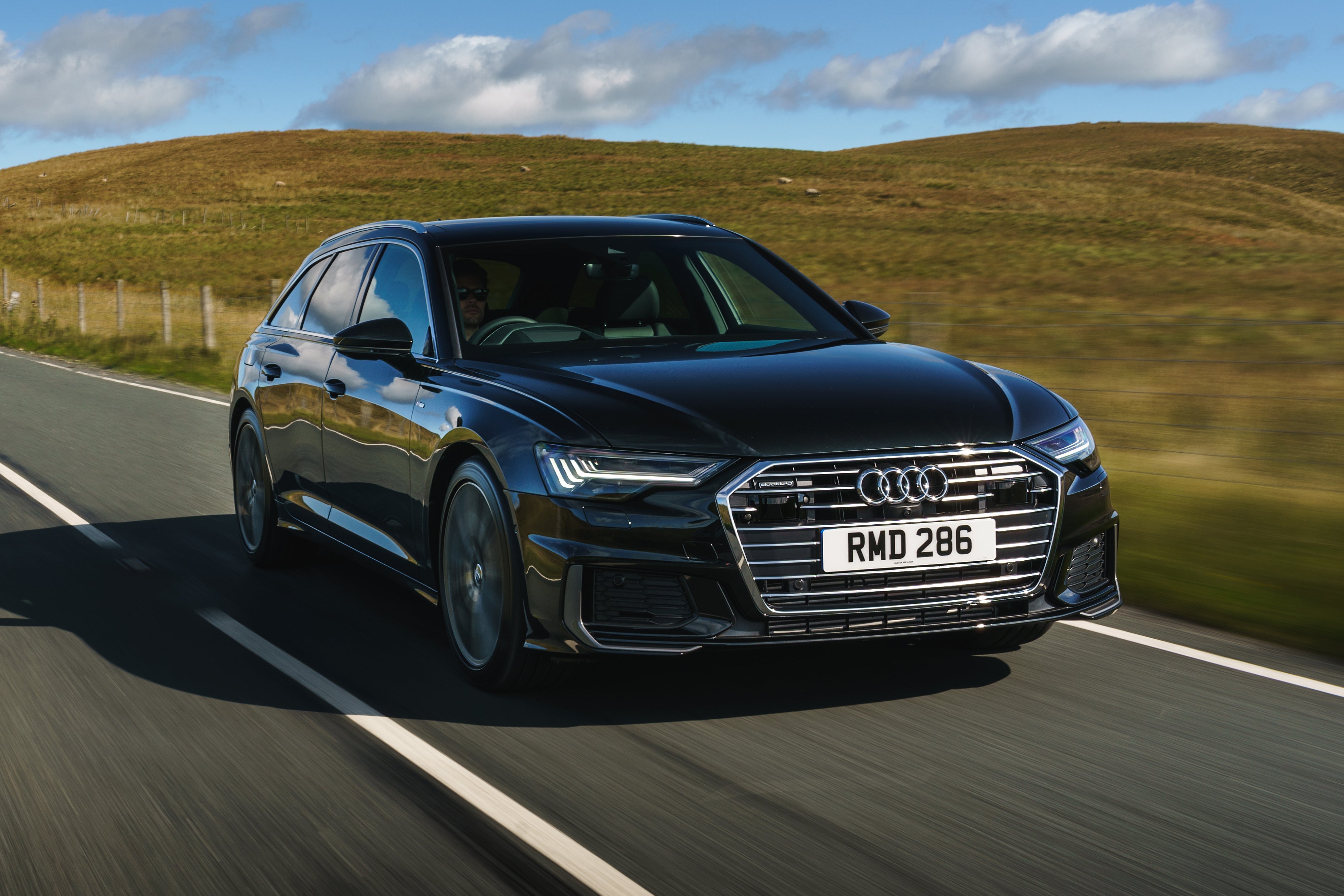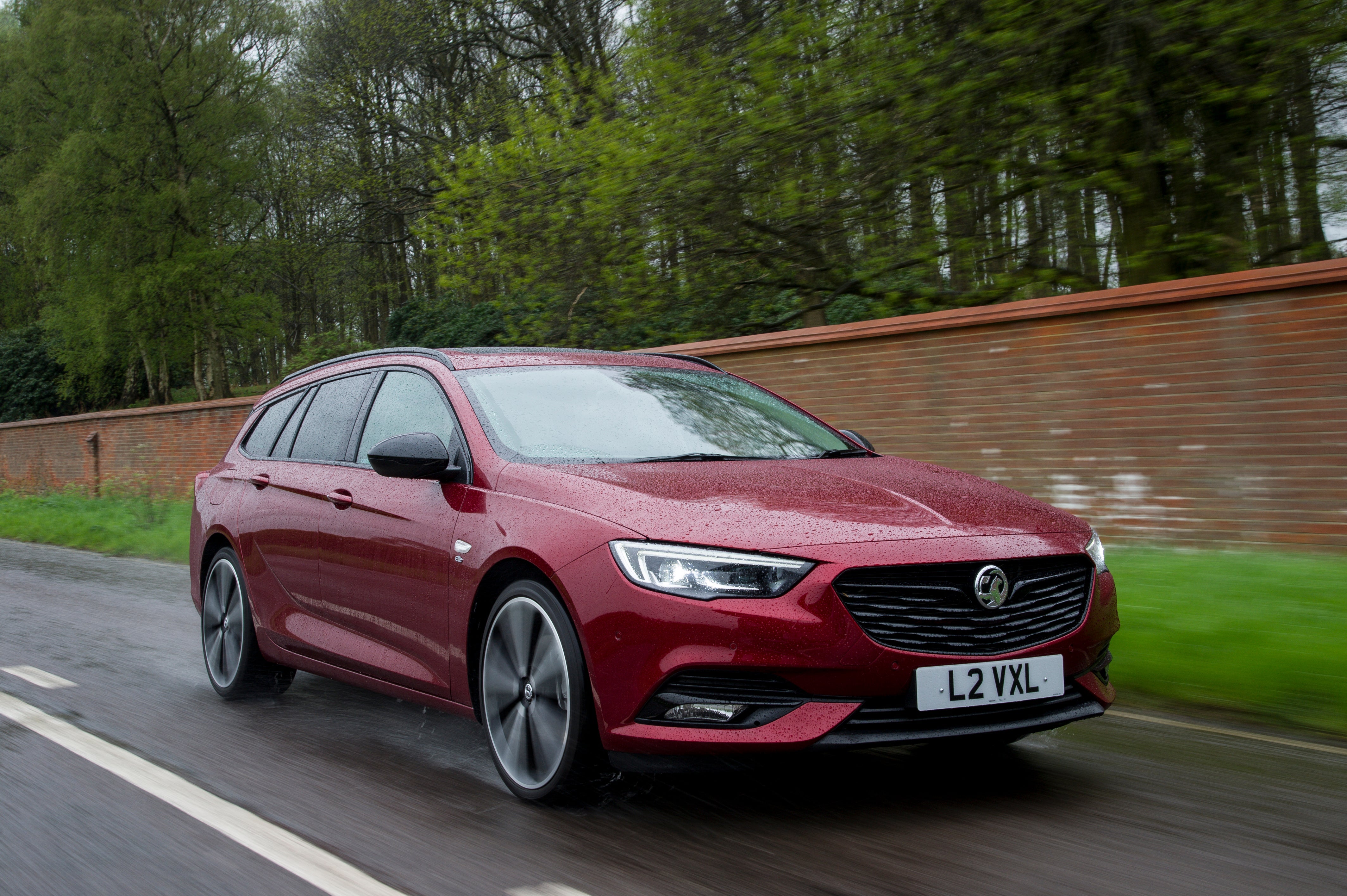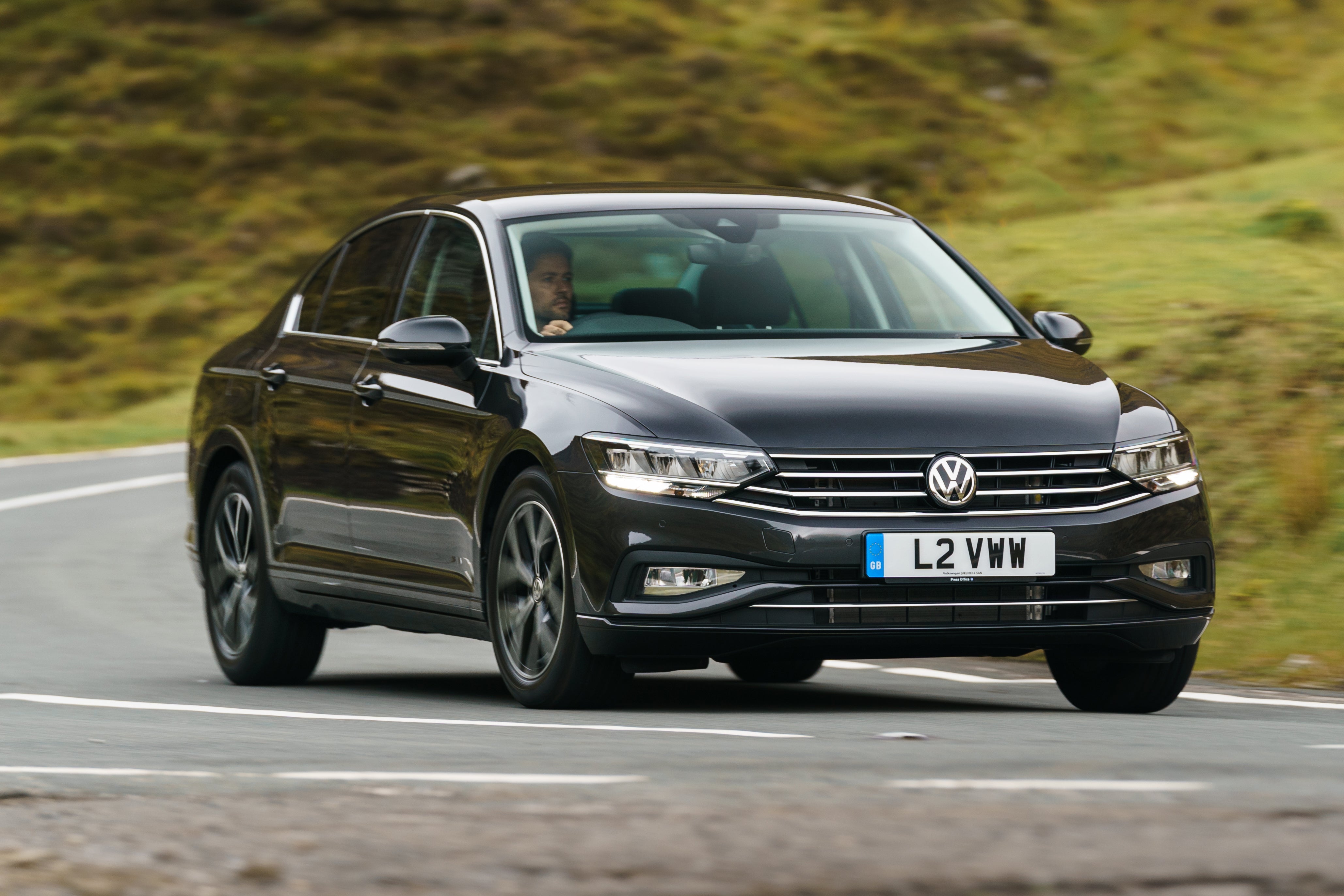Skoda Superb Estate Review 2024
Written by Phil Hall
Quick overview
Pros
- Huge boot space
- Refined and smooth driving experience
- Wide range of engine options
Cons
- Some interior elements could be better
- Not particularly engaging to drive
- Desirable options will see prices rise rapidly
Overall verdict on the Skoda Superb Estate
"If you're after a big estate car, the Skoda Superb Estate pretty much ticks every box. Buyers will love its huge load capacity, wide range of engines, comfort, competitive pricing and clever touches. No wonder then that it's one of our favourite estate cars."
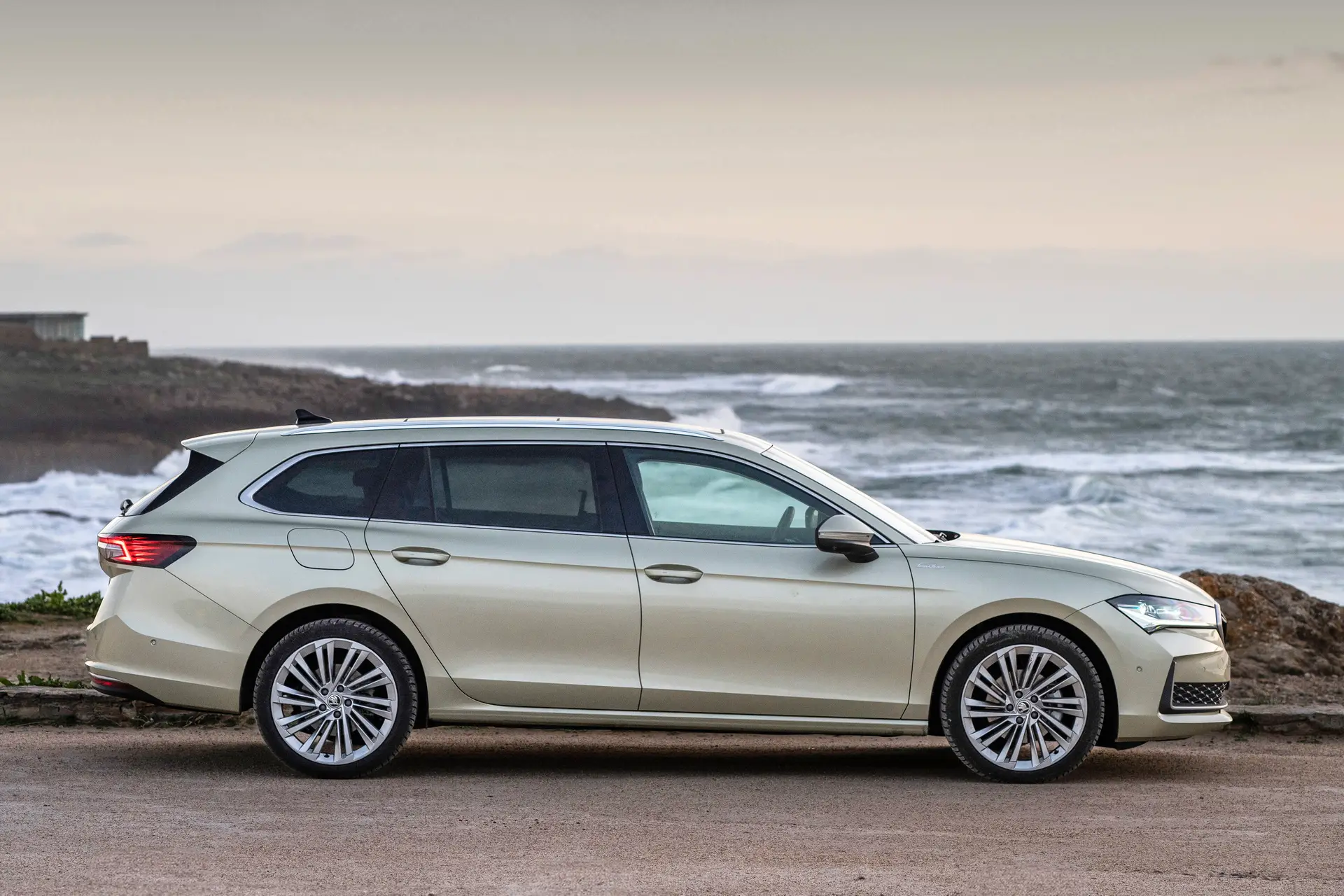
Estate cars might be falling out of favour with car buyers - you just have to look at Volvo and its recent announcement that it's stopped selling estates, but the outgoing Superb Estate has built up a loyal following and has been a big success for Skoda across Europe. So what about the new car? Read our Skoda Superb Estate review to see how it stacks up against the best estate cars.
It certainly has a lot to live up to, but the good news is that Skoda hasn't messed with a winning formula. That said, one welcome change is the styling. While the older car could look a little bland, the new Superb Estate uses the updated Skoda design language. It is more streamlined, bold and sculptural, with crisper lines and a more aerodynamic profile to boost fuel efficiency. It certainly looks a lot more premium than before and the new Ice Tea Yellow paint really finishes it off nicely.
On the inside, the attention to detail and styling has certainly come up a notch over the outgoing car, combining practical manual controls with digital displays. There is a large digital instrument panel and a new, generously proportioned 13-inch touchscreen infotainment display. You're not completely reliant on the touchscreen to control every facet of the car as the new Superb Estate has what Skoda calls Smart Dials. Positioned in the central console, these feature built-in 32mm digital colour displays can be turned and pressed, giving quick access to numerous functions.
Already a super-commodious car, the new Skoda Superb Estate is even roomier inside, with acres of space for both front and rear seat passengers. The Skoda Superb Estate has a 690-litre boot capacity, which is 30 litres larger than before and with the rear seats folded, there's an enormous 1920 litres of space.
You're spoilt for choice when it comes to engines as well. There's an enhanced range of petrol and diesel engines (something you won't find on the new VW Passat Estate), a first-ever mild hybrid, and a plug-in hybrid that offers an electric range up to 62 miles.
The Superb’s driving experience is exactly what you’d hope for from a car like this. It’s a comfortable motorway mile-eater, happy to soak up the imperfections of poor road surfaces and demanding very little from the driver in the process.
Looking for a used car for sale? We've got 100s of Skoda Approved Used Cars for Sale for you to choose from, including a wide range of Skoda Superb Estates for sale. If you're looking for the older version, you need our used Skoda Superb Estate (2015-2023) review.
Is the Skoda Superb Estate right for you?
There's a range of estate cars out there with varying boot sizes, but if you want the last word in large boots, then you're going to need a Skoda Superb Estate. Admittedly the new Passat Estate matches it for size as it shares the same platform, but you're going to have to start looking at small vans if you need to move something larger.
This makes the Skoda Superb Estate an incredibly versatile family car that will happily swallow up most things. But it's not just the boot space that impresses, as there's ample room for both driver and passengers, while the quality of the cabin doesn't disappoint. With a wide range of engines to choose from and varying trims, there's bound to be a Skoda Superb Estate that will suit your needs.
What’s the best Skoda Superb Estate model/engine to choose?
You're spoilt for choice with the engine options with the Skoda Superb Estate, with an engine to suit most buyer's needs.
If you're going to be doing regular long journeys or are going to be towing, then diesel is the way to go and the 2.0-litre TDI with 150PS is our choice. It gets the balance of economy and performance just about right, though if you're looking for something with a little bit more grunt and greater versatility, then consider the more powerful 193PS 2.0-litre diesel that comes with grippy 4x4 all-wheel too.
When it comes to petrol, it's the smallest 1.5-litre TSI engine with mild-hybrid tech that's the pick of the bunch. The 204 and 265PS engines will certainly be more fun (and useful if you're going to be hauling heavy loads a lot), but the 1.5-litre will be much easier on the wallet when it comes to running and insuring. A great all-rounder, happy running around town or zipping along at motorway speeds.
If you're only planning to do long journeys reasonably sporadically and have easy access to charging at home (even with a 3-pin power socket), then the plug-in hybrid option might be a good choice. The 1.5-litre petrol engine is paired with an electric motor to deliver a system output of 204ps, but more importantly, a pure electric range of up to 62 miles. Perfect if you've got a short commute or do similarly short journeys where you can easily top up the battery and run under electric power most of the time.
The entry-level Skoda Superb Estate in SE Technology trim comes with a lot of kit, but we'd take a look at the SE L trim as it comes with a few more features as standard, while also allowing you to add on a few more optional extras. The top-of-the-range Laurin & Klement version is comprehensively spec'd and adds another layer of luxury, but might be a bit overkill for most buyers.
What other cars are similar to the Skoda Superb Estate?
If you're looking at a Skoda Superb Estate, perhaps its closest rival is the Volkswagen Passat Estate. With both cars coming from the Volkswagen Group, past generations have seen the Passat regarded as the slightly posher option, if a little less practical thanks to the slightly smaller boot.
However, both the new Skoda Superb Estate and Volkswagen Passat Estate have been developed alongside each other, blurring the lines a little. Both now have the same size boot, but with more physical controls in the Superb Estate and a noticeable lift in quality to give it a more premium feel, you have to look really hard to see where the extra money goes on the Passat.
Sticking with Volkswagens and if you're after a large electric estate, there's the upcoming ID.7 Tourer.
Otherwise, there's the similarly large Peugeot 508 SW, while if you're looking for something with a premium badge, then there's the Audi A6 Avant, BMW 5 Series Touring and Mercedes E-Class Estate. There's also the excellent Volvo V90, but Volvo has recently pulled new orders for estate cars, so you'll have to pick one from the used car market.
Speaking of the used market, if you're on a budget then cars like the Ford Mondeo Estate and the Vauxhall Insignia Sports Tourer are worth exploring, though they don't offer quite the same levels of space.
Comfort and design: Skoda Superb Estate interior
"With masses of space for you, your passengers and luggage, the Skoda Superb Estate backs this up with a good amount of tech and welcome physical controls."
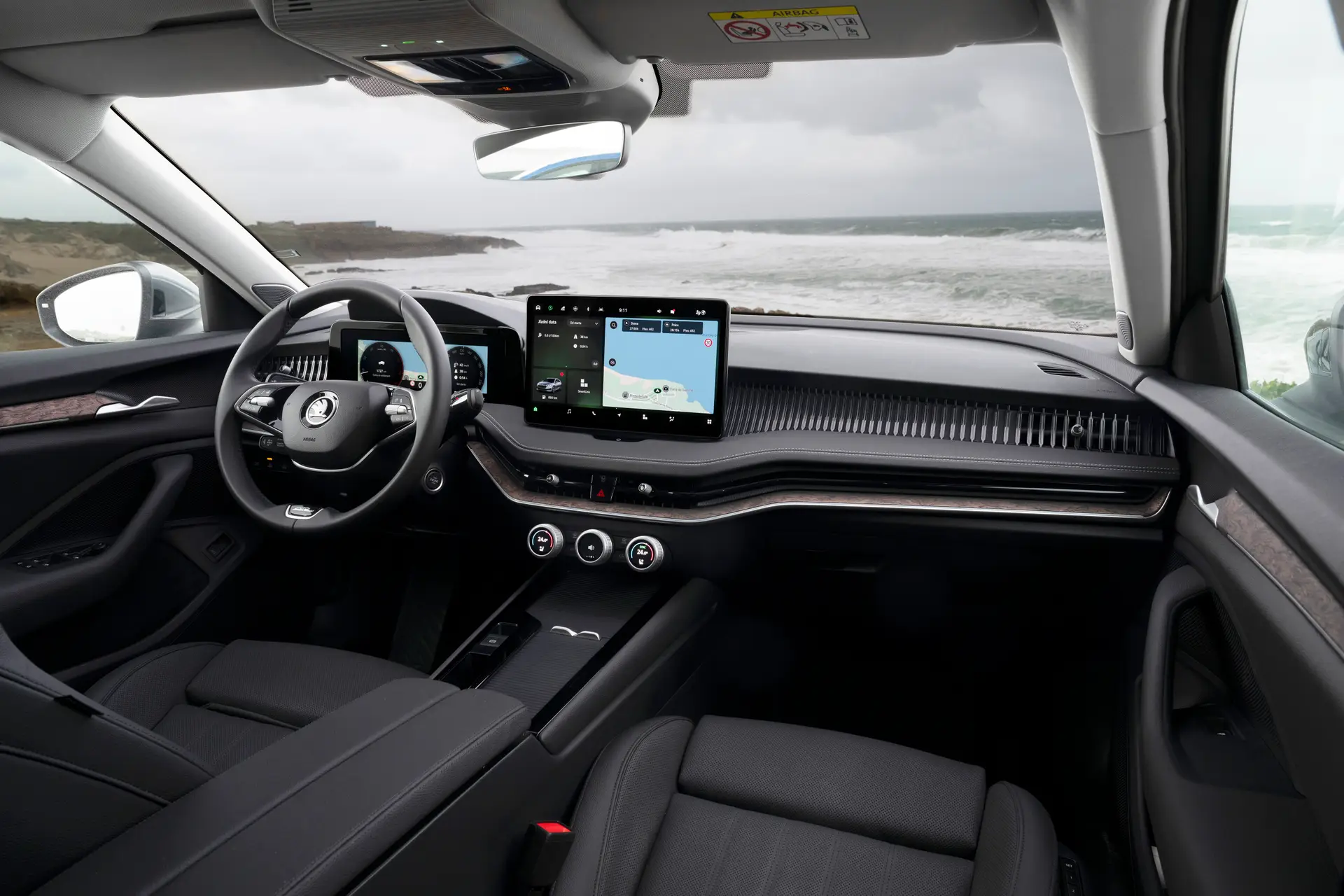
The design of the Skoda Superb Estate's interior is quite a step-change over the model it replaces, looking much more sophisticated in its design.
The dash is dominated by a large and centrally positioned 13-inch touchscreen display, but while the trend by a lot of manufacturers has been to shove access to all controls into a touchscreen display, Skoda has resisted that urge. Instead there are three dials, known as Skoda Smart Dials, that sit underneath the touchscreen and provide access to a range of settings and functions. Featuring built-in 32mm digital colour displays, the two outer dials allow you to adjust the climate control and heated seats, while the central smart dial can be tailored to adjust up to four settings from a choice of six, and these are stereo volume, fan speed, fan direction, driving modes, map zoom and smart air conditioning.
To make the new Skoda Superb Estate even more practical, the gearshifter has been moved from the centre console onto the steering column, freeing up space between the two front passenger seats for more storage options.
Speaking of seats, you should find it easy to get comfy. There are three seat options, with 'Loft' offering electric back rest adjustment, 4-way lumbar support and manually adjustable cushion length. Choose 'Lounge' and not only do you get vertically and horizontally adjustable headrests, but there's also a massage function with three air cushions. Finally in 'Suite' and you get Skoda's Ergo seats that have seat memory, electrically adjustable in all directions and an advanced massage function with 10 pneumatically controlled air cushions.
The new Skoda Superb has up to 28 of the firm’s ‘Simply Clever’ features too, including an electric roller blind that doubles as a luggage compartment cover, a rear centre armrest with integrated tablet holder, and an integrated filler in the windscreen washer reservoir cap.
Quality and finish
The quality of the interior is is more premium than what we've experienced in the past with Superbs, especially if you opt for the Laurin & Klement with those Cognac leather seats, but there are a couple of little things that detract from the overall feel.
The fluted trim in front of the passenger seat certainly looks great, but feels a bit too plasticky for our liking, while the Smart Dials could do with a bit more weight and again, feel quite plasticky. It's a shame as they look great and will be potentially a key touchpoint in the cabin.
Those grumbles aside though and the Skoda Superb Estate feels well put together, with some nice elements including stitched leather and other pleasing materials.
Infotainment: Touchscreen, USB, nav and stereo in the Skoda Superb Estate
Regardless of which trim level you choose, the Skoda Superb Estate comes with a large 13-inch touchscreen that acts as your gateway to the car's infotainment, navigation and car settings. The display is clear and bright, while also nice and responsive.
Overall it's pretty easy to navigate, and to avoid loads of sticky finger marks from prodding the screen, the Superb Estate comes with a special cleaning block that lives in the central storage space and quickly removes those marks. There's also Apple CarPlay and Android Auto connectivity, while wireless charging is standard.
Choose from SE L trim level and above and a head-up display is an optional extra - the first time we've seen this on a Superb and it projects navigation, speed and other driver information. Otherwise all models come with a configurable 10-inch Virtual Cockpit digital instrument display.
There's also a voice-activated personal assistant, known as Laura, which will be updated with ChatGPT to broaden the functionality of it even further.
As well as the standard stereo (with DAB and Bluetooth connectivity), the Laurin & Klement trim comes as standard with a 725-watt Canton Sound System with a 16-channel amp, digital equaliser and twelve speakers. This is in addition to a central speaker in the dashboard and a subwoofer in place of the space-saver spare wheel. Even if you don't plump for the L&K trim, it's available as an option on both the SE Technology and SE L trims.
Space and practicality: Skoda Superb Estate boot space
The old Skoda Superb Estate was a big car, but the new version is bigger still. In fact, it's 40mm longer at 4902mm, and a bit taller by 5mm, measuring 1482mm. Interestingly (or not) the new Superb Estate is 15mm narrower at 1849mm.
If you're considering a Superb Estate, then perhaps one of your biggest considerations is boot size. The outgoing Superb Estate had one of the largest boot capacities on sale at 660 litres, but Skoda has managed to eke out even more space on the new car, with the latest Superb Estate providing 690 litres of boot space. If you need anything larger than that you'll have to start looking at vans. One caveat here is if you opt for the plug-in hybrid version, boot space shrinks to 510 litres due to the additional space required to accommodate the batteries.
With such a large boot, Skoda's been clever and equipped it with some neat storage solutions. This includes foldable bag hooks, four lashing eyelets, a multi-purpose storage pocket under the boot cover (now with additional bag hooks), an electrically operated load cover and two cargo elements to stop stuff sliding about.
That's the boot, but space hasn't been sacrificed elsewhere. Upfront there's excellent head and legroom, making it feel genuinely spacious, while there are loads of storage solutions around the cabin. It's just as good in the back - you'll happily be able to comfortably get two tall adults in there thanks to the huge amount of space available. Trying to get a fifth adult in might be a bit of a squeeze as the seat's a little higher, but it's doable. If you're going to be popping kids in the back though, whether that's with child seats or not, they're not going to know what to do with all that space. Well, apart from litter it with breadstick crumbs perhaps.
Handling and ride quality: What is the Skoda Superb Estate like to drive?
"If you're looking for a comfy large estate car that will happily eat up plenty of motorway miles, then you're not going to go wrong with the Superb Estate."
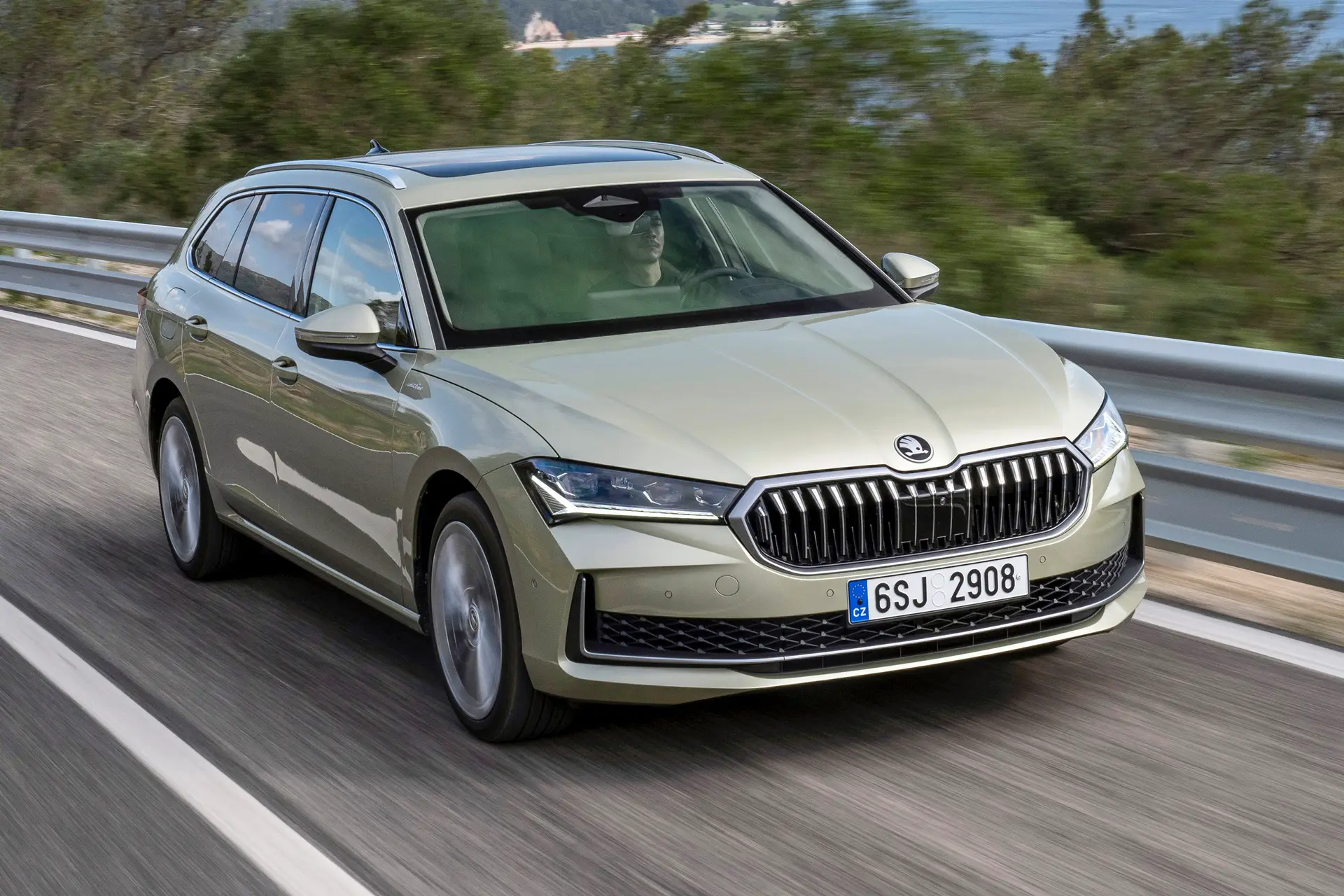
All the Superb Estate test cars we've tried so far were all equipped with Skoda's Dynamic Chassis Control (DCC) Pro adaptive damper system. Standard on L&K trim cars and an optional extra on SE L models, DCC Pro allows you to stiffen or soften the ride of the Superb to suit the road conditions you're on. In most situations you'll probably want to stick it in 'Comfort' as this results in a very smooth and refined drive, almost gliding over uneven road surfaces. The steering is relatively light too, but delivering accurate feedback.
The Superb Estate is not going to make the hairs on the back of your neck stand up when you drive it, but for those occasions though when you find yourself on a flowing B road, 'Sport' mode on DCC Pro will firm the suspension up to improve handling, while adding a bit more weight to the steering as well. There's a decent amount of grip should you want to hustle a bit, but at the end of the day it's a big and heavy car. In reality it's much more at home on a motorway and wafting you along in comfort. This is where the Skoda Superb Estate excels.
Despite the Skoda Superb Estate's size, it's actually pretty easy to manoeuvre round town thanks to light steering at slower speeds. The DSG gearbox provides smooth, low-speed driving, while we didn't experience any hesitancy from it when trying to pull out into traffic or merging on a roundabout.
There's also plenty of driver assistance tech on offer as well - all cars come with a rear parking camera, with the Laurin & Klement version coming with a 360-degree camera to provide a bird's eye view of the car. Park Assist can automatically park in perpendicular and parallel parking spaces for you as well, controlling not just the steering but also the speed as well.
What engines and gearboxes are available in the Skoda Superb Estate?
The new Skoda Superb will not offer a pure electric powertrain - if you want a Skoda EV, you'll have to plump for the (very good) Enyaq.
Instead, the Skoda Superb Estate will be available with a range of petrol, diesel, plug-in hybrid and, for the first time, mild hybrid motors. All new Skoda Superb Estates have a DSG automatic gearbox, with either six or seven speeds. There's no manual gearbox available.
If you're looking at a petrol Skoda Superb Estate then the 1.5-litre TSI petrol engine should tick a lot of boxes. Producing 150PS, it has mild hybrid tech to save fuel when on the move – and ACT+ active cylinder technology, which turns off two cylinders during relaxed cruising, improves fuel economy. If you're looking for something with a bit more grunt there's the choice of a 2.0-litre TSI with 204ps – or a 265ps version with 4x4 four-wheel drive. The latter is perfect if you're looking for a discreet and fast estate car, just don't be fussed about fuel economy figures.
The entry-level 1.6-litre TDI diesel engine on the outgoing Superb Estate has been dropped from the latest model. Instead, the 2.0-litre TDI with 150PS is the base diesel engine and for many will hit the sweet spot. Economical, there's enough torque for it not to feel sluggish and it feels moderately quick as well. Not only that, but it's more than up to the job for towing heavy loads.
On top of this there's also a more powerful 190PS version of this engine if you're looking for more performance (and torque increases from 360Nm to 400Nm), while this version is also 4x4 four-wheel drive if you're looking for something with even greater versatility.
Finally there's the plug-in hybrid version, and it's had a bit of an overhaul from the car it replaces. While the older model used a 1.4-litre TSI petrol engine paired with an electric motor to deliver 218PS, the new Superb Estate iV PHEV uses the newer 1.5-litre TSI engine coupled to an electric motor to produce 204PS. While it's down on power a little, it uses a larger battery (up from 12.7kWh to 25.7kWh) to give a pure electric range of up 62 miles - a significant improvement over the 35 mile range of the older car.
Refinement and noise levels
On the move and the Skoda Superb Estate is nice and refined, insulating passengers from the thrum of the outside world, while even at motorway speeds wind noise is kept to a minimum.
The Superb Estate's suspension does a good job of ironing out bumps in the road to provide a smooth ride, with cars kitted out with DCC Pro providing even greater levels of comfort. Opt for a car that comes with larger alloy wheels though and you can expect a little bit more feel and noise coming through from the road.
Engine choice will also have a part to play. As you'd expect, the PHEV version is the quietest when running on electric power alone, while the 1.5-litre petrol mHEV has to work harder than the larger 2.0-litre petrol engines. The diesels are more audible at lower speeds, but you'll hardly notice them once you're cruising at motorway speeds.
Safety equipment: How safe is the Skoda Superb Estate?
The latest Skoda Superb Estate hasn't been tested by Euro NCAP yet, but the older model when tested back in 2015 scored an impressive five-star rating, so we'd assume a similarly high score for the latest car. We'll update this once it's been tested.
The Skoda Super Estate comes with up to 10 airbags and there's not shortage of driver assistance on offer either. Using nano radar sensors it enables the car to alert you to crossing traffic (such as pedestrians and cyclists) when you're trying to move out of a blind exit like a driveway or small side street. It'll even brake automatically to avoid a collision.
The nano radar sensors have also allowed Skoda to improve the Front Assist alert system, now with Predictive Cyclist Protection, while Side Assist can now detect approaching vehicles from up to 90 metres behind (up from 70 metres) and will warn of dangerous lane changes.
Exit Warning is on hand to alert you to approaching traffic before a door is opened, while Swerve Support is designed to prevent car-to-car collisions at speeds between 18 and 86mph. On top of this, Swerve Support promises to also help avoid collisions with pedestrians and cyclists at speeds between 18 and 52mph.
MPG and fuel costs: What does a Skoda Superb Estate cost to run?
"Despite being a large car, the Skoda Superb Estate is still pretty frugal. For those doing the most miles, the 150PS diesel makes the most sense, though for regular short journeys the PHEV makes a decent case for itself."
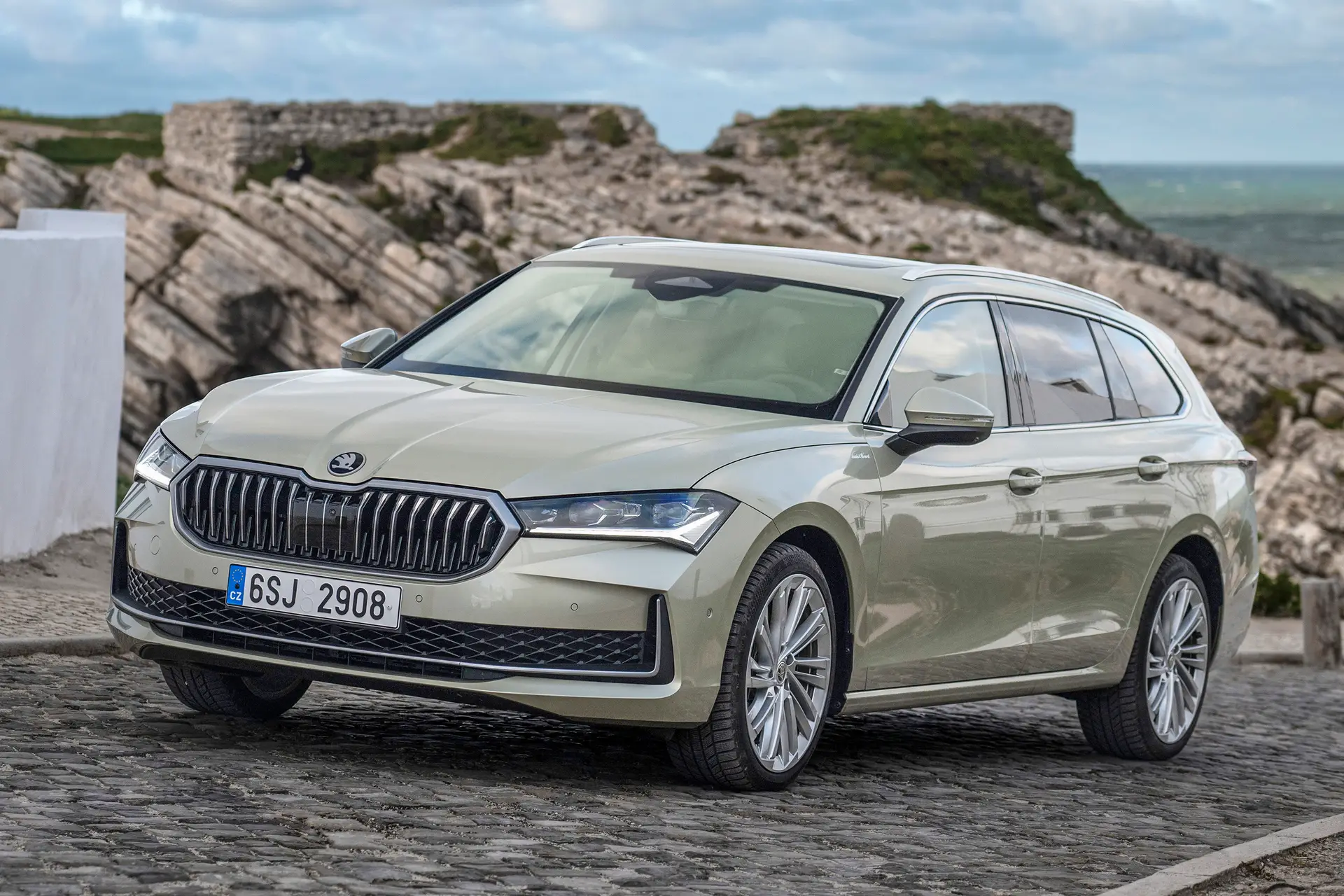
Plump for the 150PS 2.0-litre diesel then and you can expect around 55mpg, but the more powerful 193PS diesel with four-wheel drive might be a tempting proposition. It's certainly got more torque on hand, but you're going to sacrifice a bit of fuel economy for the sake of this boost in performance.
The 1.5-litre TSI mHEV engine with mild-hybrid tech is suited to more varied driving, so expect around 40mpg under normal driving. Again, the more powerful petrols bring extra performance benefits, but more trips to the filling station.
Depending on your circumstances, the Superb Estate PHEV could fit the bill with a claimed 62 miles of electric range - perfect for short trips and regular charging. But that's the dealbreaker - don't charge it or take it on regular long trips where the battery will get depleted and you're going to be getting lower MPG figures than the standard 1.5-litre TSI mHEV. Those extra batteries are a lot of dead weight to lug around if they're not charged.
How reliable is a Skoda Superb Estate?
While the new Skoda Superb Estate is still too new to get a clear picture of its reliability, its predecessor has a good reputation overall for reliability, while the Skoda brand itself generally performs very well for reliability. The Skoda Superb Estate also comes with a 3 year/60,000 mile warranty from new.
Insurance groups and costs
Insurance groups for the new 2024 Skoda Superb Estate are still to be determined, but if it's anything like the previous car, it should find itself in some moderately low insurance groups. For example, the older SE L model with a 1.5-litre petrol engine is a relatively low group 21 and we wouldn't expect things to change drastically with the newer car.
VED car tax: What is the annual road tax on a Skoda Superb Estate?
After the first year you'll be paying a flat rate of £180 a year in Vehicle Excise Duty on a Skoda Superb Estate. That's for either a diesel or petrol engined model, with hybrid models qualifying for a £10 discount.
While lower-spec Superb Estates are under £40,000, some models will nudge over that while the top-spec Laurin & Klement version starts at £47,400. Be prepared then to pay an additional £390 a year from the second time the vehicle is taxed for five years. This tax is also transferred over if you're not the first owner.
How much should you be paying for a Skoda Superb Estate?
"Prices for the new Skoda Superb Estate start at £36,165 for the entry-level SE Technology trim, but rises to £47,400 if you're after the top of the line Skoda Superb Estate Laurin & Klement."
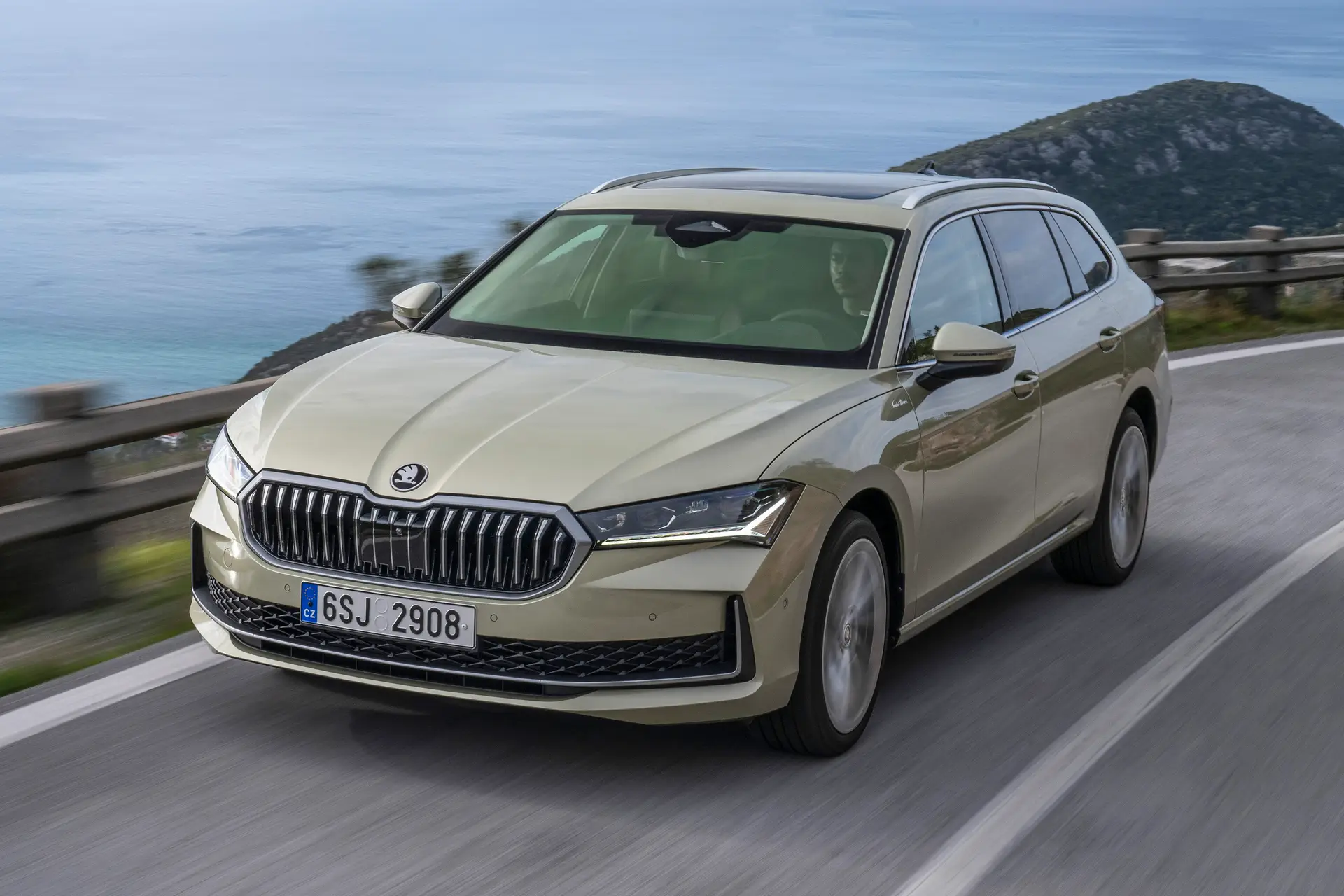
Prices will vary depending on which of the six engine configurations you opt for, while the new Superb Estate is available in eight colours - two solid and six metallic. These are Pure White, Ice Tea Yellow, Midnight Black, Pebble Silver, Cobalt Blue and Carmine Red.
You might find some nearly new deals on a Superb Estate, while the outgoing car still remains a hugely desirable machine. Perhaps you fancy the plug-in hybrid version? Two-year-old examples are looking great value for money, starting from around £23,000. Petrol and diesel versions of a similar age can be found from around £21,000.
Trim levels and standard equipment
The Skoda Superb Estate is available in three trim levels, with the entry-level trim known as SE Technology. Sitting on 17-inch 'Mintaka' alloy wheels, the Superb Estate SE Technology comes with a pretty comprehensive spec, which includes a 13-inch infotainment display, 10.25-inch digital instrument display, rearview camera, adaptive cruise control (with speed assist, lane assistance, traffic jam assist and traffic sign recognition). You'll also find LED headlights, keyless start/stop and wireless mobile charging (including a built-in cooling function).
Move up to the Skoda Superb Estate in SE L trim and you get larger 18-inch alloy wheels (catchily named 'Dofida'), rear LED lights with animated indicators and Skoda's latest LED matrix beam headlights with dynamic range control and cornering. These also replace dedicated fog lights with poor weather light and all-weather light modes. SE L trim also benefits from artificial leather sports comfort seats (including an advanced massage function for the front seats) and an electronic parcel shelf.
Finally, the Skoda Superb Estate Laurin & Klement is the top-of-the-range trim and benefits from 18-inch 'Belatrix' alloy wheels and other exterior tweaks, including a dark chrome grille surround and rear diffuser strip. There's a choice of either black or cognac leather, while there's a Canton sound system, heated multi-function steering wheel and heated rear seats. There's even heated washer nozzles. Elsewhere you'll find things like park assist and an area view camera, while there's also an updated version of Dynamic Chassis Control (DDC). Called Dynamic Chassis Control Plus, it supports a wider range of damping characteristics.
Ask the heycar experts: common questions
How big is the new Skoda Superb Estate?
Is the new Skoda Superb Estate a good tow car?
What is the Skoda Superb Estate boot space?
Other popular reviews
Stay up to speed with great offers plus the latest car news and reviews
Keep me updated by email with the latest advice, news and offers from heycar.
By submitting you agree to our privacy policy

